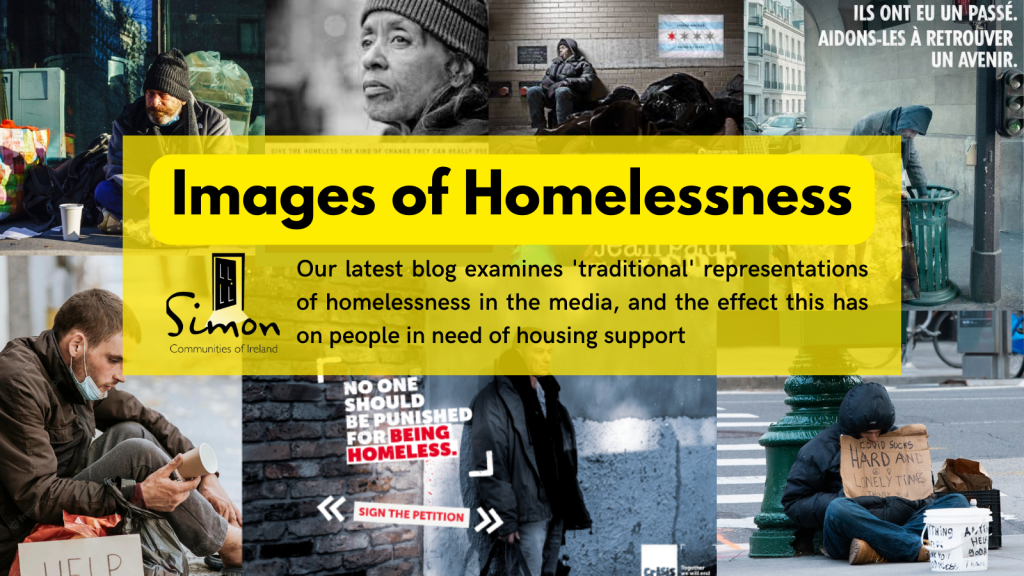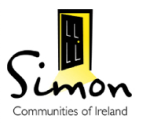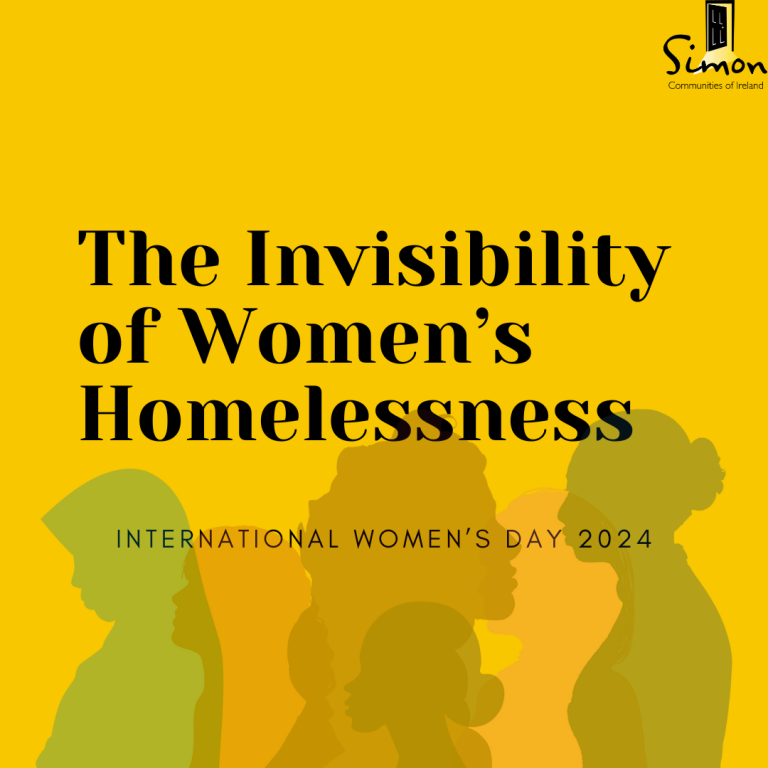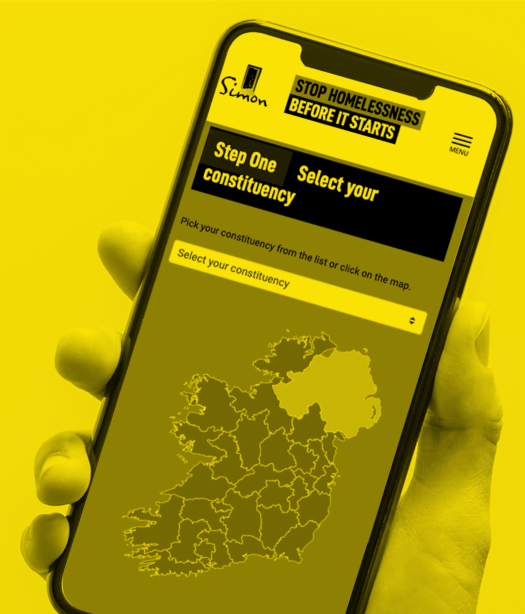
The Simon Community of Ireland recently supported FEANTSA to organize and host an international Policy Conference in Croke Park, Co. Dublin. It was a wonderful event attended by international experts and filled with interactive discussions on housing and homelessness.
The ‘typical’ representation of homelessness portrayed in the media was a common thread that underlined many discussions over the two days. Often, the depiction of homelessness focusses on the image of a single male, sleeping rough, and disheveled in appearance. Studies have shown that this is the traditional view of homelessness perceived by the public and reiterated in media.[1] Homeless organisations often use this image in campaigns or fundraisers; it is successful in grabbing attention, creating an emotive response, and getting attention on the topic in the media.[2]
This is not to suggest that the images of representation are untrue or dishonest, but this singular image does not represent the broad experiences of homelessness and hidden homelessness experienced by thousands of people in Ireland each year.
So what is the Issue?
It became clear at the conference that the dominance of this image affects people in homelessness who cannot locate their experience in these images. This issue arose at three of the workshops at the conference:
- Roundtable on Youth Homelessness
- Young Women Experiencing Homelessness
- LGBTIQ Youth Homelessness
Discussions showed that homeless organisations and supports across many countries have over-relied on this single emotive image of homelessness. As such, there is a significant risk that we fail to show that organisations supporting those experiencing homelessness are inclusive, and by omission exclude those who do not fall within that image of homelessness.
People within these groups experiencing homelessness did not see themselves within the services provided by homeless organisations. As an extension of this, they qualified their experiences (such as being forced to sleep in their car) as something other than homelessness, as they did not fit into the standardised image of the rough sleeping lone man.
Because of this, women, young people, and members of the LGBTQI+ community in need of housing support were less likely to engage with homeless services, making them more liable to experiences of ‘hidden’ homelessness.
A failure to provide inclusive visual (and structural) representation drives people into hidden homelessness and deprives them of support.
Women in Homelessness: Riikka Tuomi spoke of her personal experience of homelessness, as she took extreme measures to avoid emergency homeless accommodation such as entering dangerous relationships. Riikka spoke of emergency homeless accommodation, but never saw it as an option; it was a service for men. Despite an ongoing struggle to find accommodation and other necessary supports, Riikka mentioned that she did not see herself as homeless for a long time.
Research shows that women are more inclined to avoid emergency homeless accommodation through periods of hidden homelessness either because they feel unsafe to do so, or because they do not see that as an option for genuine support. This often can force women to enter into unstable and potentially abusive relationships to cater to their housing need.[3]
Young People: A speaker from Upstream Cymru (a Welsh School-Based Intervention to End Youth Homelessness) discussed results from a 2021 study of young people in school.[4] When asked about their experience of homelessness, 2% self-identified that they had been homelessness in the last year. Another 3% appeared to experience homelessness (for example, slept in a hostel, in a car, or public place), yet they did not identify themselves as homeless. Anecdotally, young people assumed their experiences of housing insecurity as a temporary glitch, as they did not see themselves within the homeless trope. Nor did these students present with homeless indicators for young people; 65% of students at high or immediate risk of youth homelessness were well engaged with school.
LGBTIQ+: Speakers from True Colors United highlighted the importance of LGBTIQ+ visual representation in homeless organisations. Young people that they work with avoided stays in emergency homeless accommodation because they were unsure if organisaitons would be LGBTIQ+ friendly and inclusive. Visual cues were central to their decision in accessing support.
A recent study into LGBTIQ+ homeless youth in Ireland[5] shed light on the invisibility of their homeless experience. A fear of homophobic or transphobic abuse and discrimination meant that members of the LGBTIQ+ community experiencing homelessness avoided emergency accommodation, making their homeless experience practically invisible.
The common theme running through these FEANTSA conference discussions was that people delayed accessing homeless support because either:
- They did not visually see themselves as homeless or within the services provided by homeless organisations, or;
- They did not feel safe accessing services that did not clearly cater to their need.
A lack of inclusive imagery and representation can be so damaging for people experiencing – or at risk of – homelessness.
What can we do?
Media images surround us constantly and subconsciously influence our everyday lives. It is deeply important to acknowledge its power and make conscious decisions on the way we depict social issues.
The way we depict homelessness needs to change. Homeless organisations need to reflect the reality faced by different groups of people in the visual images we portray: homelessness exists beyond one type of person.
Increasing inclusive media representation has proven to have positive effects. Shifts in media images have helped to ensure an increase an increase of LGBT athletes[6], and a more positive image of women in STEM disciplines.[7]
Visual representation is the first step in ensuring all people have access to safe, timely, and targeted homeless support. The next step is providing inclusive services that support the needs of all people experiencing or at risk of homelessness.
[1] https://prism.ucalgary.ca/bitstream/handle/11023/121/ucalgary_2012_remillard_chas?sequence=4
[2] http://shura.shu.ac.uk/9576/1/Dean_Drawing_What_Homelessness_Looks_Like_FINAL.pdf
[3] https://www.feantsa.org/en/report/2021/04/01/womens-homelessness-european-evidence-review?bcParent=27
[4] https://www.cardiff.ac.uk/__data/assets/pdf_file/0009/2589723/Upstream-Cymru-Data-Report-17.11.2021.pdf
[5] https://researchrepository.ucd.ie/handle/10197/12508
[6] https://www.tandfonline.com/doi/abs/10.1080/1461670X.2019.1639537
[7] https://dl.acm.org/doi/abs/10.1145/3319422?casa_token=d43f4VIsvYgAAAAA:ioCEeHMuve2UuUvNuY1_U-yMhXfxzaG4rVmosIJifFCQ3xtXIngweCwHdrazM6Sn6hsgopBJU68o


